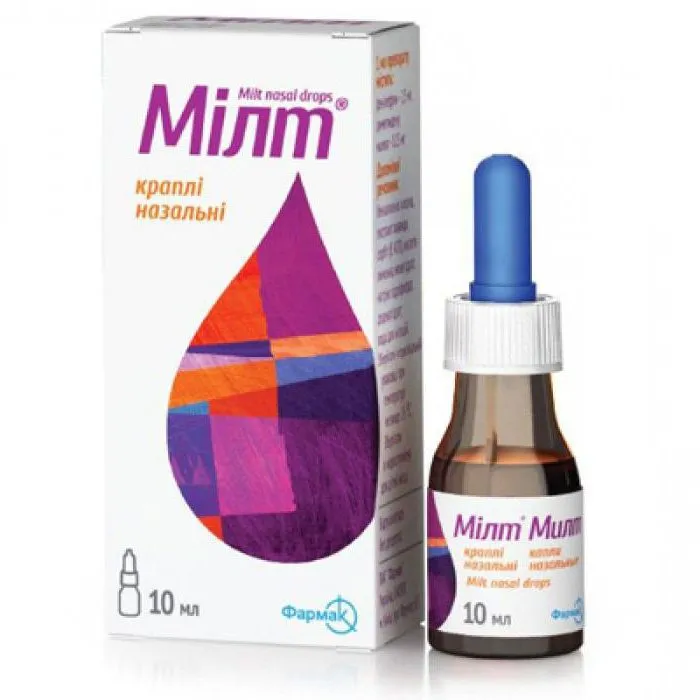Description
Milt (Phenylephrine) Nasal Drops 10 ml. №1 Vial
Ingredients
- Active ingredient: Phenylephrine hydrochloride
- Other ingredients: Benzalkonium chloride, disodium edetate, sodium dihydrogen phosphate dihydrate, sodium chloride, sodium hydroxide, and purified water
Dosage
Adults and children over 12 years: 1-2 drops into each nostril every 4 hours as needed. Do not exceed 4 doses in 24 hours.
Indications
Milt nasal drops are indicated for the relief of nasal congestion due to the common cold, hay fever, or other upper respiratory allergies.
Contraindications
Do not use Milt nasal drops if you are:
- Allergic to phenylephrine or any other ingredients in the product
- Taking monoamine oxidase inhibitors (MAOIs)
- Have severe heart disease
Directions
For nasal use only. Tilt head back, apply the drops, and breathe gently through the nose. Avoid sneezing immediately after application.
Scientific Evidence
Phenylephrine, the active ingredient in Milt nasal drops, is a sympathomimetic agent that acts as a selective alpha-1 adrenergic receptor agonist. This action results in vasoconstriction of blood vessels in the nasal passages, leading to decreased swelling and congestion. Several studies have demonstrated the efficacy of phenylephrine in relieving nasal congestion and improving nasal airflow.
Additional Information
It is important to follow the recommended dosage and not exceed the stated frequency of use to avoid potential side effects such as rebound congestion. If symptoms persist for more than 3 days, discontinue use and consult a healthcare professional. Keep out of reach of children.
- Phenylephrine nasal drops offer a convenient and effective solution for nasal congestion relief. By targeting the underlying cause of congestion, these drops provide quick and lasting relief without the drowsiness often associated with other decongestants.
- Clinical trials have shown that phenylephrine nasal drops are well-tolerated and provide rapid relief of nasal congestion symptoms. Patients using phenylephrine reported significant improvements in nasal airflow and congestion compared to placebo groups, highlighting the efficacy of this medication in managing nasal congestion.





